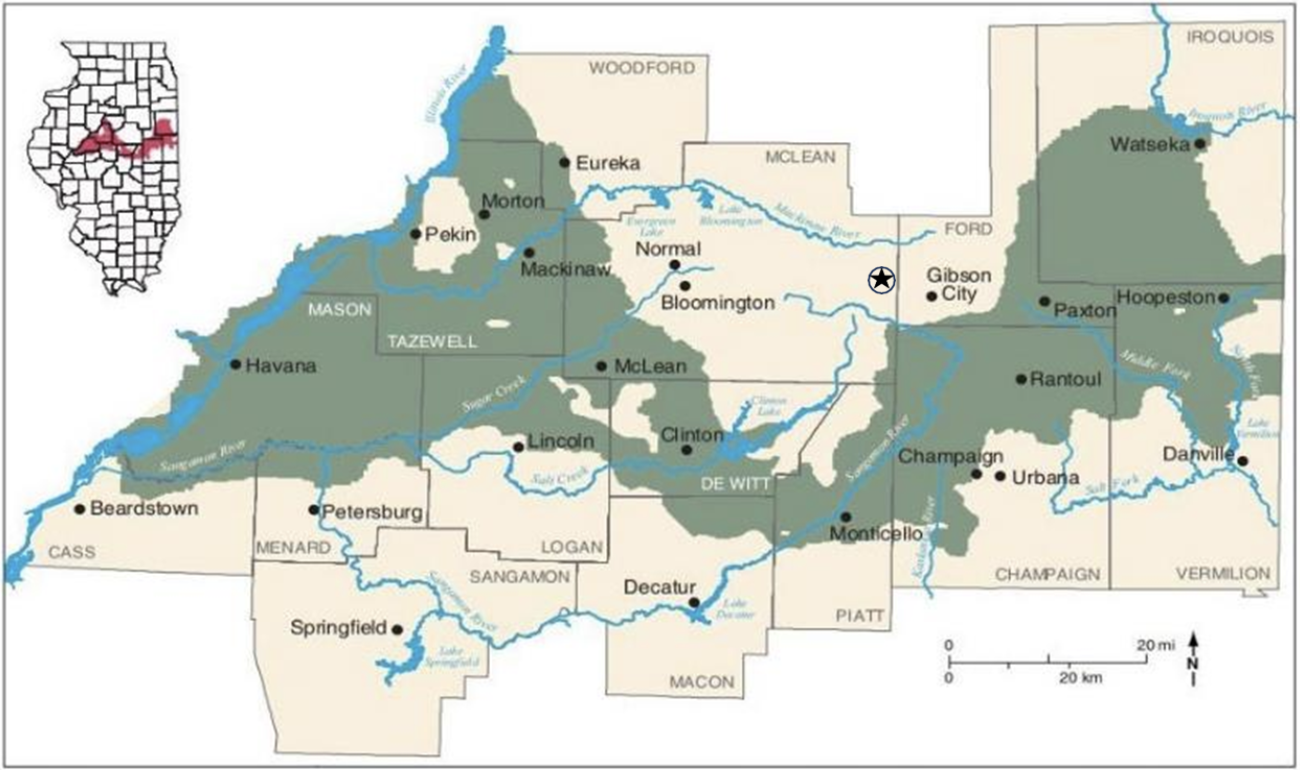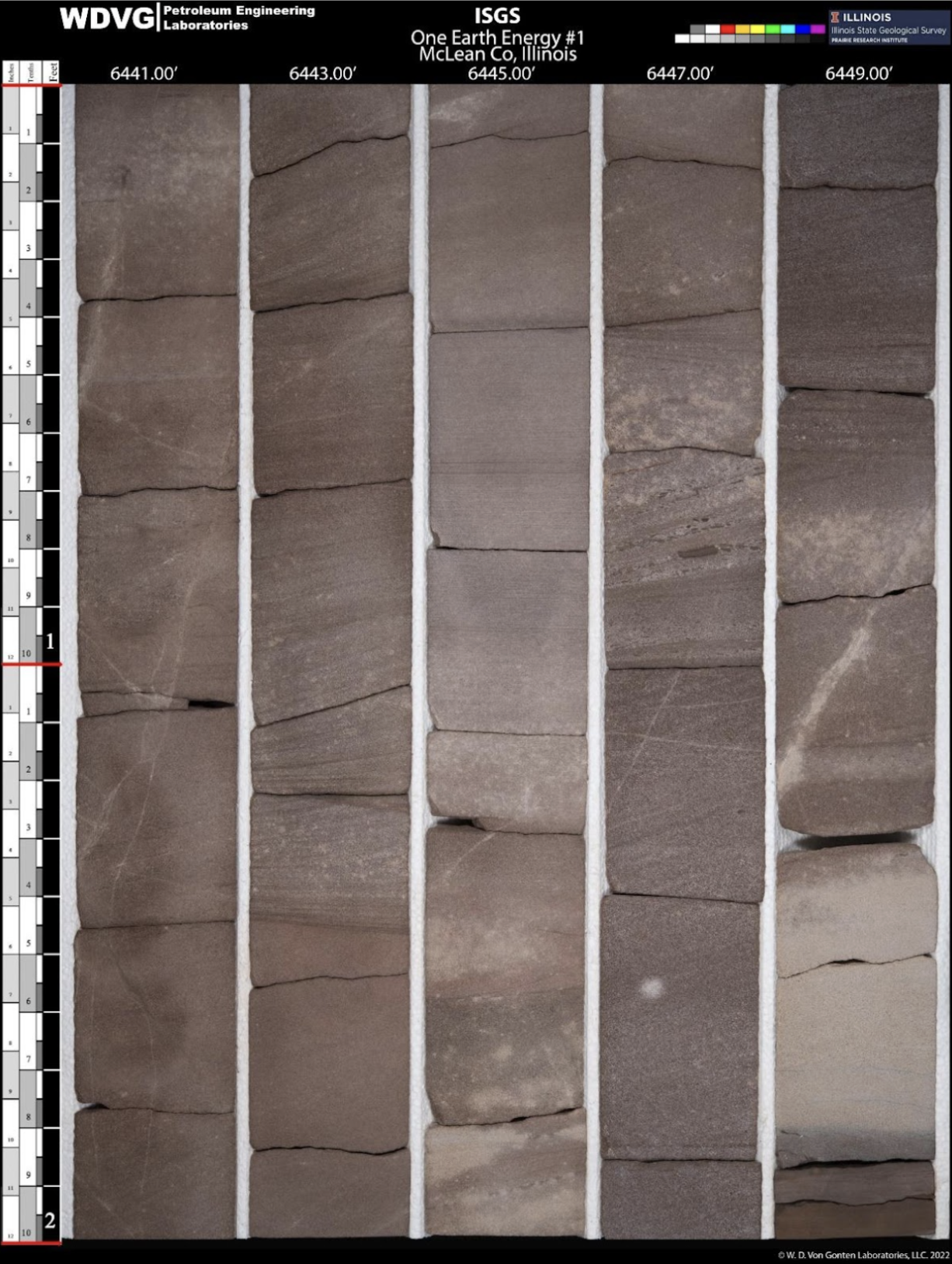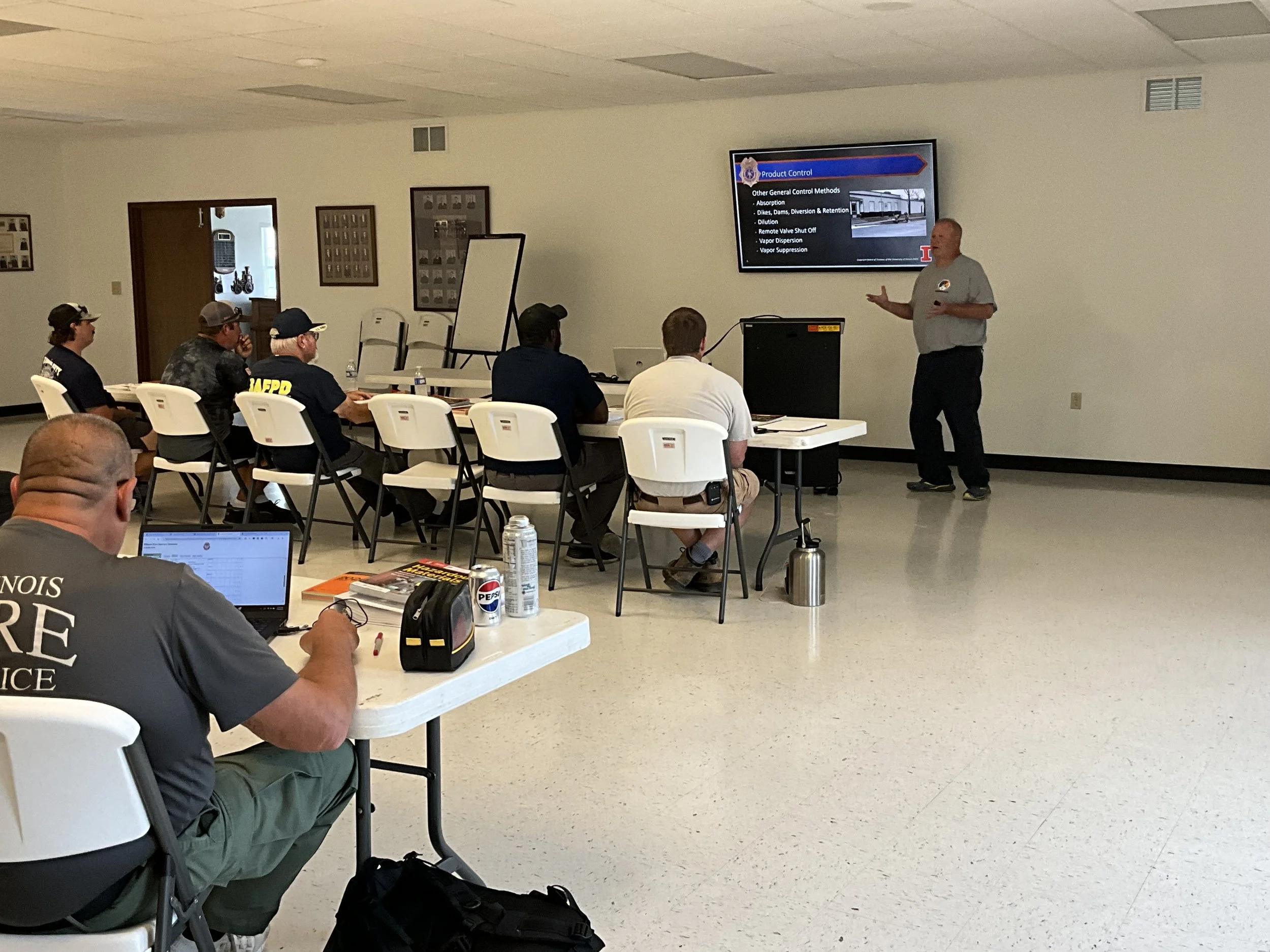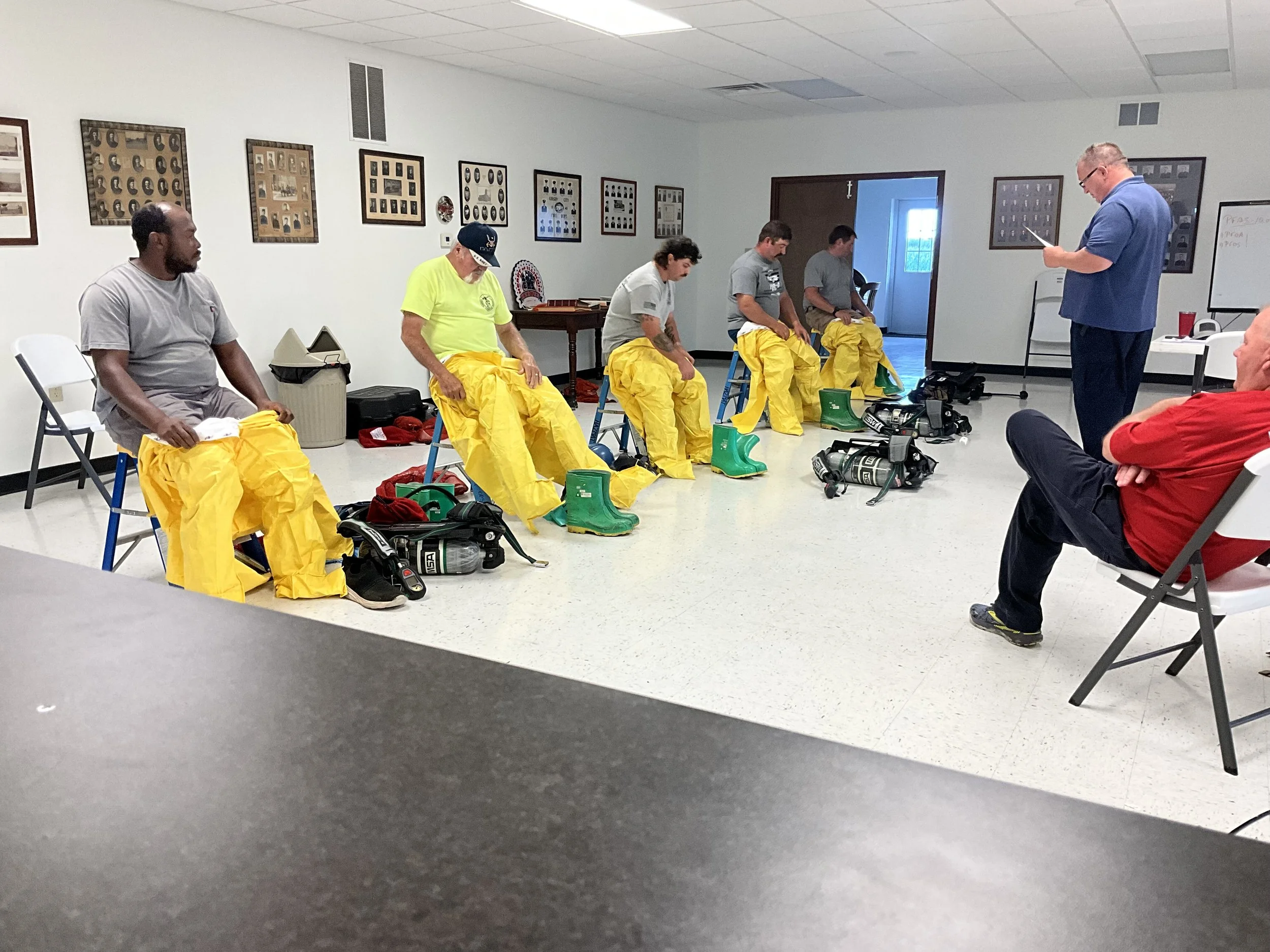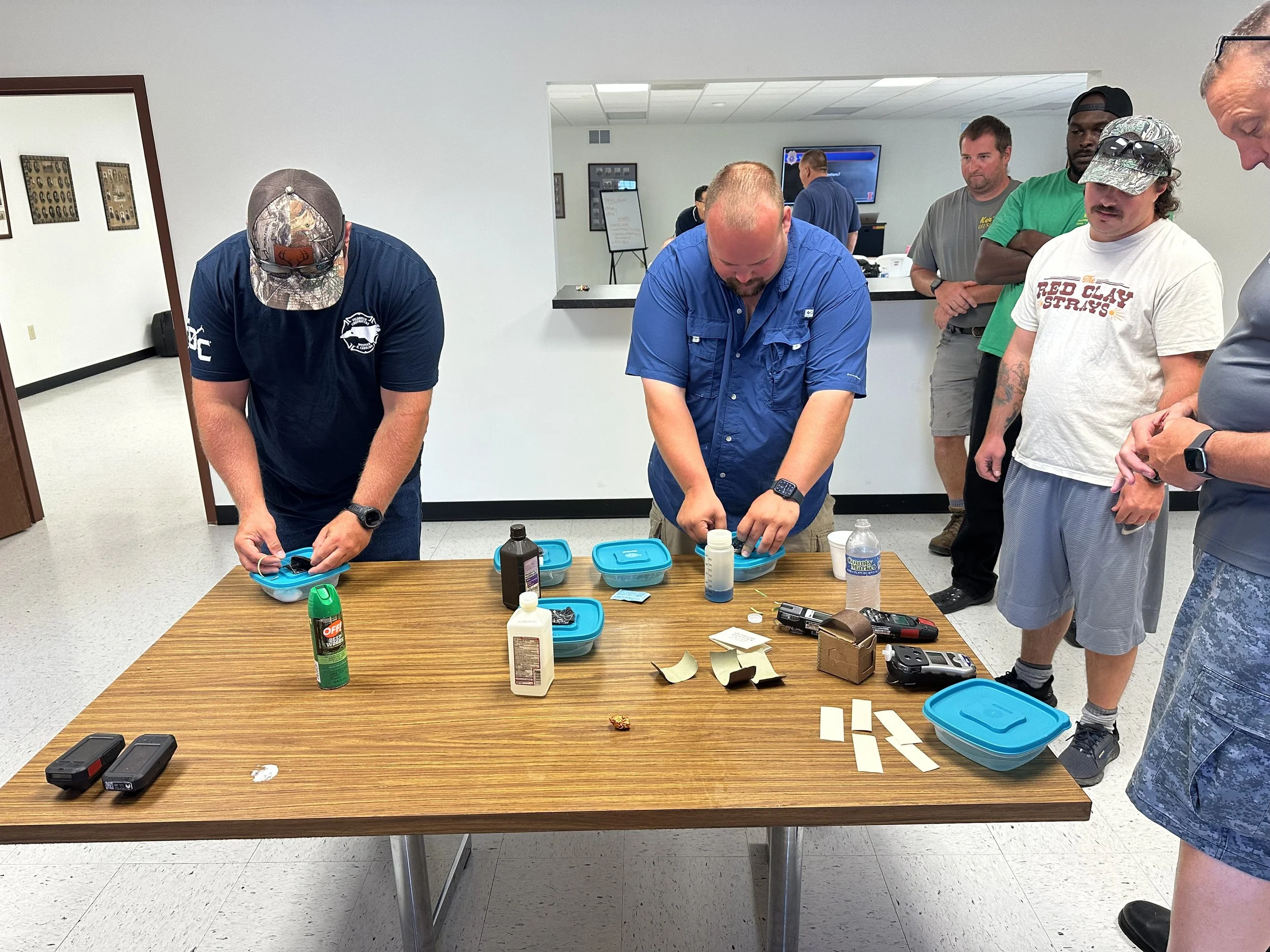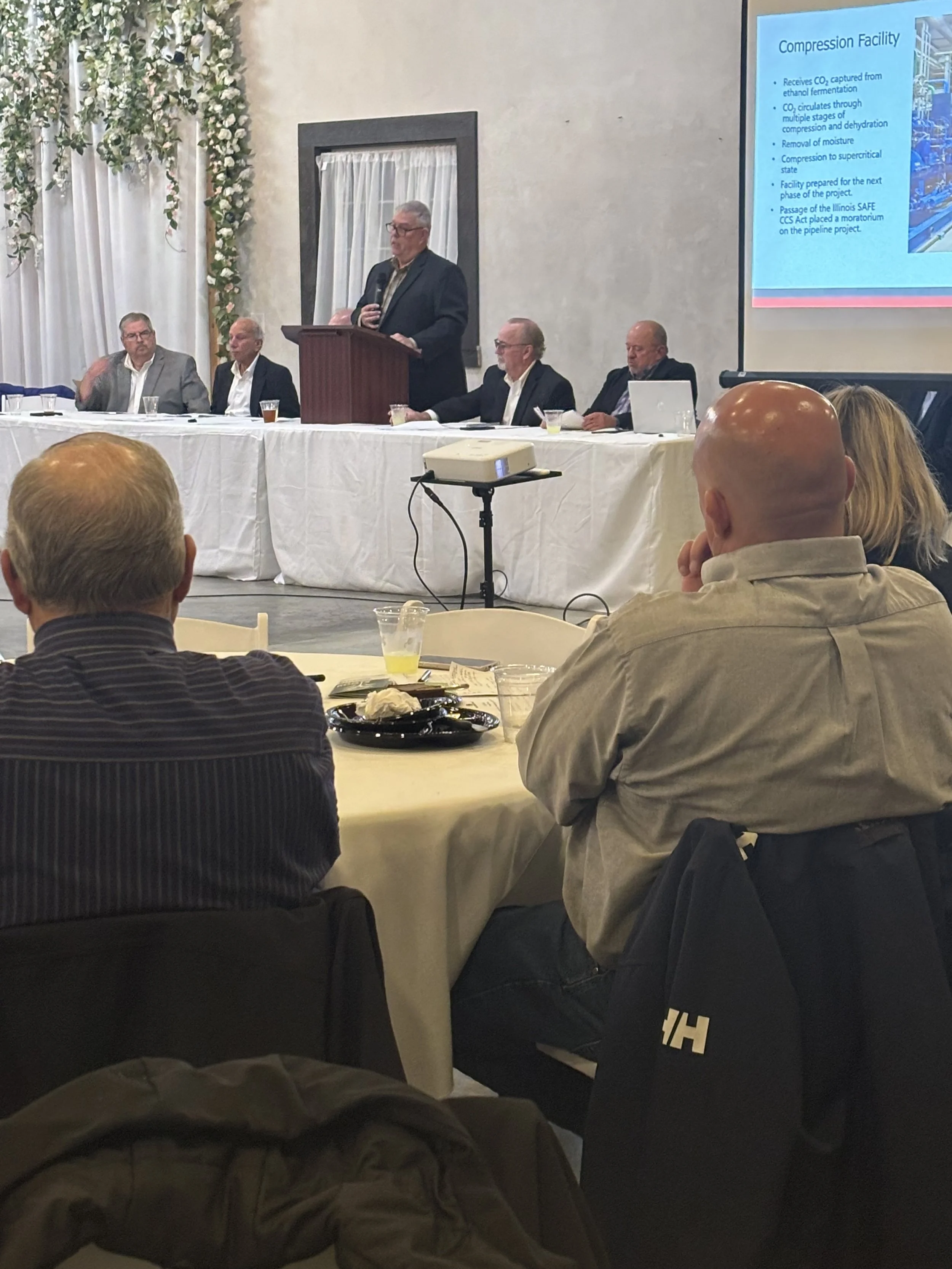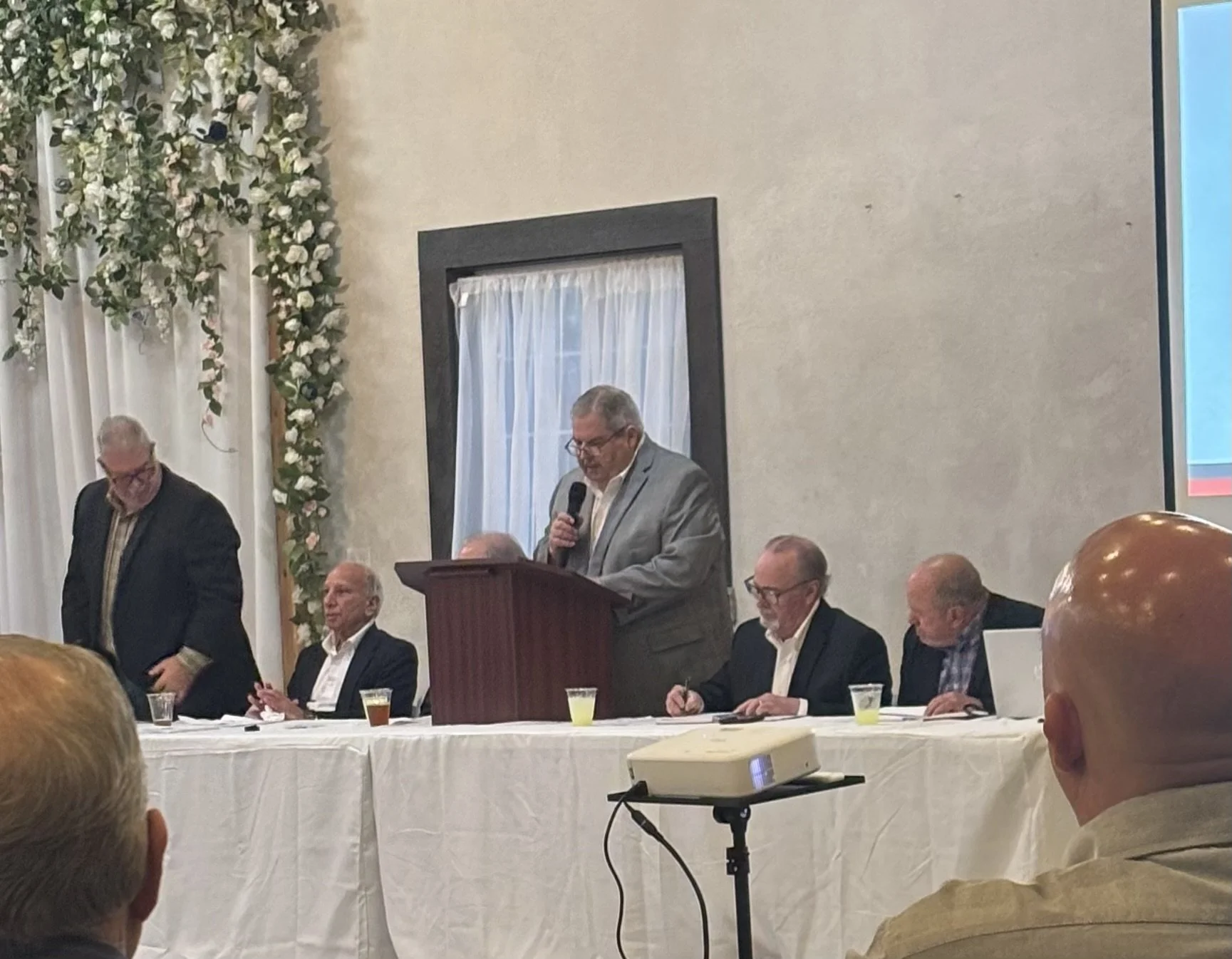
one earth sequestration project
Sequestration Site Selection
The Illinois State Geological Survey (ISGS) led the Carbon Storage Assurance Facility Enterprise (CarbonSAFE) Illinois Storage Corridor (ISC) is one of five projects awarded for Phase III work by the U.S. Department of Energy (DOE). This project aims to characterize a site for geologic sequestration and develop a U.S. Environmental Protection Agency (EPA) Underground Injection Control (UIC) Class VI well permit. Class VI wells are used to inject carbon dioxide (CO2) into deep rock formations for permanent underground geologic storage. The One Earth Energy #1 (OEE #1) well was sited after pre-feasibility studies and data interpretation from the ISGS. The OEE #1 stratigraphic well was drilled to characterize the Mt. Simon Sandstone reservoir and the Eau Claire Formation seal capability.
A regional site assessment was completed to evaluate the geologic setting, the storage complex, and existing resources before selecting the proposed injection well sites, One Earth Energy #1 (OEE #1) stratigraphic well location, and future monitoring wells.
The Mahomet Aquifer Sole Source Aquifer (Figure 1) extends across portions of 14 counties in east-central Illinois, producing an average groundwater withdrawal rate estimated to be 210 million gallons daily. The Mahomet Sole Source Aquifer was considered in this assessment and guided the placement of any project wells.
The proposed well site is well outside the mapped boundary of the Mahomet Sole Source Aquifer. GIS analysis indicated that no protected and sensitive areas, groundwater resources, or existing resource development would be negatively impacted at the proposed location.
Figure 1. Location of OEE #1 (black star) in relation to the Mahomet Sole Source Aquifer in green (USEPA).
Extensive regional characterization efforts have been completed to assess the feasibility of permanent geologic storage in the Mt. Simon Storage Complex (Figure 2). The Mt. Simon Sandstone is the storage reservoir and overlying Eau Claire Formation seal, constituting a storage complex that has already been successfully used for natural gas storage in east-central Illinois and geologic carbon dioxide sequestration in south-central Illinois. The Mt. Simon formation is a regionally extensive reservoir underlying multiple regional seals, making it an ideal carbon sequestration target.
Figure 2. Primary injection reservoirs and seals in the Cambro-Ordovician Storage Complex
The OEE #1 well was permitted through the Illinois Department of Natural Resources and drilled from December 2, 2021, to February 12, 2022 (Figure 3), to approximately 7,104 feet into the Precambrian age basement. The Mt. Simon occurs at 4,455 feet deep and is 2,014 feet thick. Within the lower Mt. Simon Sandstone are sandstones having an arkosic lithology that are the target injection zone. The Arkose interval top is at 6,262 feet and is 207 feet thick.
A full suite of wireline logs were run for the intermediate and production sections of the well. A total of 64 rotary sidewall cores were acquired. A total of 252 feet of core was cut and recovered in the production section. Figure 4 is a photograph of the whole core taken from the high porosity and permeability arkosic layer in the lower Mt Simon Sandstone, which is the primary storage zone. A fiber optic cable was installed to continuously measure temperature and acoustic signals from 4,400 feet to the surface. Upon approval of the Class VI permit application, the OEE #1 well will be converted to a monitoring well to sample fluids in the Mt. Simon Sandstone, along with continuous pressure and temperature monitoring.
Status of the EPA Underground Injection Control (UIC) Program Class VI Permit Application:
Figure 3. Les Wilson Rig #25 drilling the OEE #1 in the winter of 2021 to 2022.
Figure 4. Whole core photograph of the Lower Mt Simon arkosic sandstone from 6,441 to 6,451 feet.
Proposed Pipeline Route
One Earth Sequestration has completed extensive work developing a carbon capture and sequestration system. Along with the progress on the Class VI well application package, the compression facility has been built.
The passage of the Safety and Aid for the Environment in Carbon Capture and Sequestration Act (SAFE CCS Act) temporarily halts the approval and construction of new carbon pipelines until July 2026 or until the federal Pipeline and Hazardous Materials Safety Administration (PHMSA) establishes new safety rules.
Engineering and safety plans continue to progress on the CO₂ transportation pipeline with the anticipation of implementing new PHMSA rules. The proposed underground pipeline would stretch 5.92 miles from the existing compression facility structure through western Ford County, entering McLean County and terminating at the proposed injection well sites (Figure 5).
OES worked closely with landowners to gain permission for the entire length of the pipeline and pore space area without the use of eminent domain.
Figure 5. The map shows the proposed pipeline route extended to the proposed injection wells and past the existing OEE #1 stratigraphic well.
Project activities
One Earth Sequestration is diligently preparing for our proposed carbon capture and sequestration project, with a strong focus on community safety and resource protection. Engaging the community and gathering public feedback are critical components of our approach. Since 2022, One Earth Sequestration (OES) has actively participated in numerous activities to foster engagement and ensure transparency in project development Some of our highlighted activities include:
Gathering input from the community by holding over 80 meetings, including sessions with farmers, landowners, local environmental groups, the chamber of commerce, and more.
Meeting with legislators and state agency leadership to answer questions and discuss details of our project.
Collaborating with geoscientists, engineers, and industry professionals to apply their knowledge to our project.
Creating a monitoring strategy to ensure the project activities protect our natural resources.
Maintaining a culture of safety through close engagement with local emergency management officials, fire departments, and hospitals to create emergency operations and response plans, and purchasing safety equipment.
Demonstrating that One Earth Sequestration (OES) possesses the financial, managerial, legal, and technical qualifications required for successful carbon dioxide capture and sequestration.
Figure 6. OES Safety Consultant Eric West provides financial contribution to Saybrook Arrowsmith Fire Department Chief Tim Christensen for safety equipment.
SAFPD personnel completed advanced HazMat and CO₂ pipeline emergency training at TEEX on November 8–9, 2025.
Renovation of the sibley baseball/softball diamond
Gibson City Fire Protection District, in partnership with the Illinois Fire Service Institute (IFSI) and with support from One Earth Energy, presented a 40-hour Hazardous Materials (Hazmat) Awareness and Operations Course on July 26–27 and August 2–3, at the Fire Protection District building in Gibson City.
Texas A&M Engineering Extension Service (TEEX) HazMat Liquid and CO2 Pipeline and Industrial Fire Emergencies Training, April 26 - 27, 2025.
Stakeholder Engagement
On April 4, 2025, the One Earth Energy 16th Annual Meeting at Countryside Camp Outside of Gibson City IL

